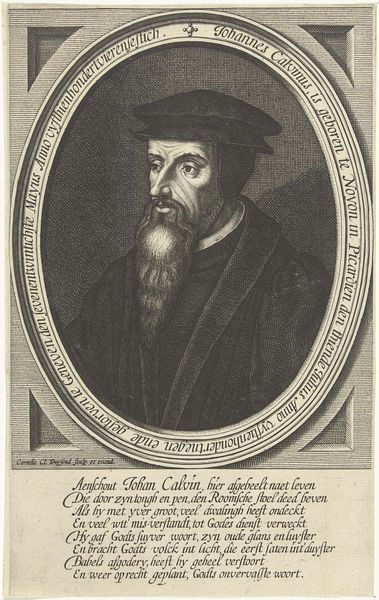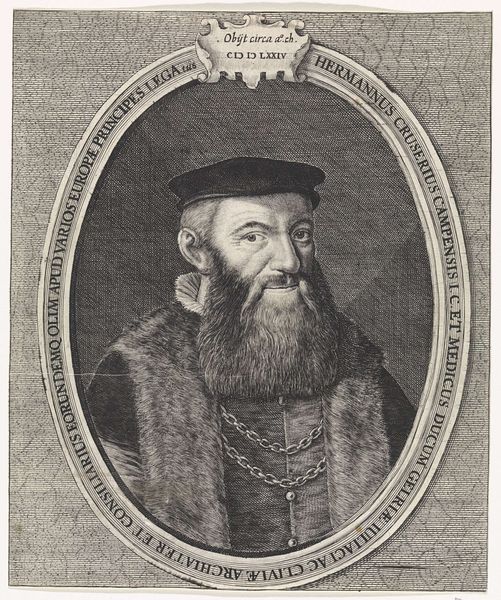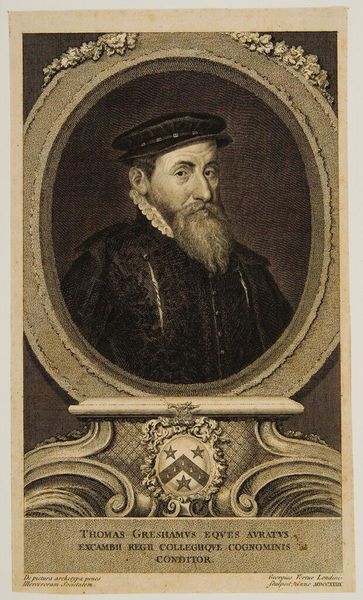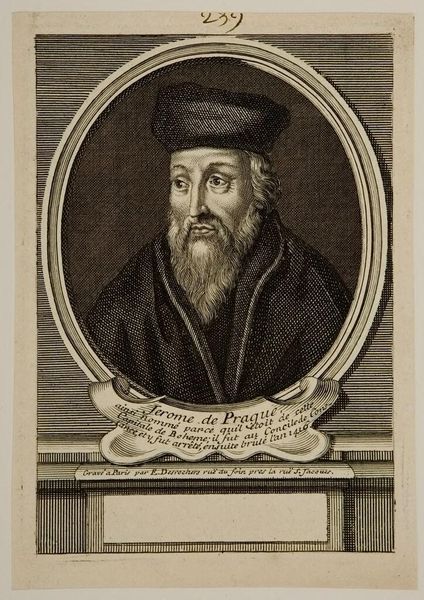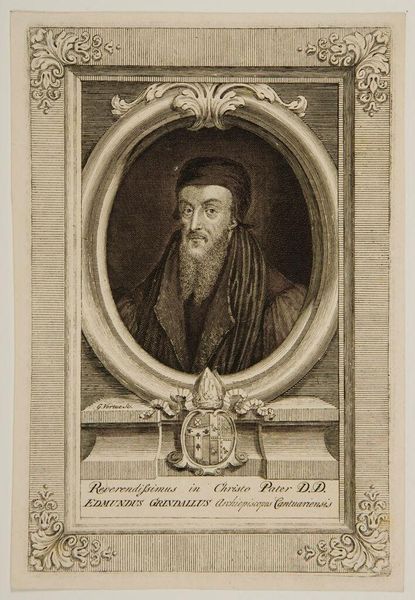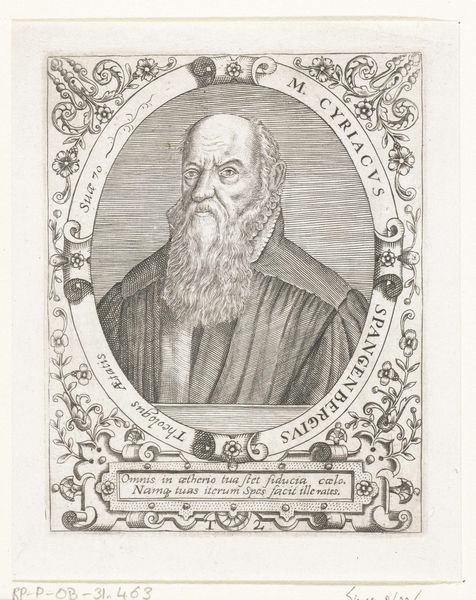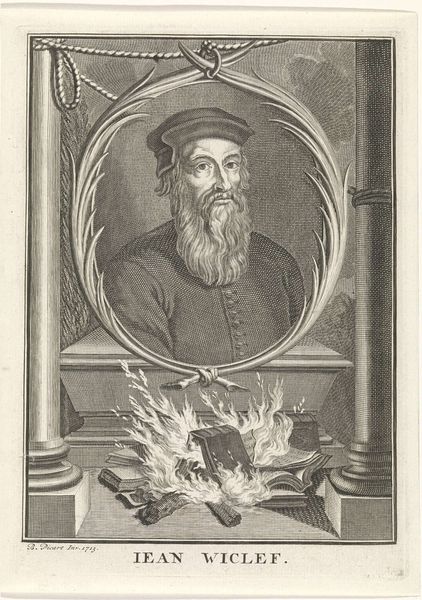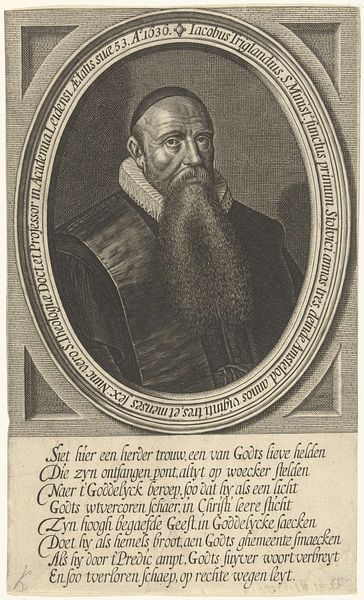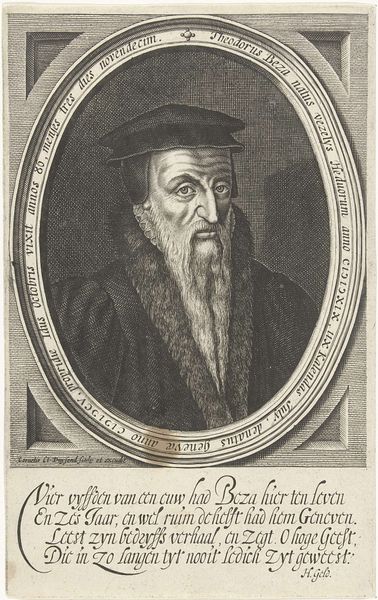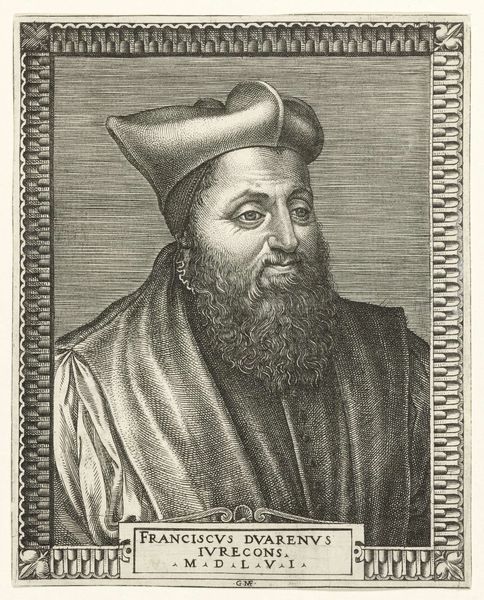
print, engraving
#
portrait
# print
#
old engraving style
#
portrait reference
#
classicism
#
history-painting
#
academic-art
#
engraving
Dimensions: height 225 mm, width 151 mm
Copyright: Rijks Museum: Open Domain
Curator: Looking at this somber image, it seems like a dispatch from another era. It's a portrait of Willem Bardes, the Mayor of Amsterdam, engraved sometime between 1841 and 1879. What impressions does it leave you with? Editor: Immediate impression? The man looks as though he's carrying the weight of Amsterdam on his shoulders. It's something in his eyes… maybe its because of the texture given by the print that has so much weight? It seems so... intense. Curator: The intensity probably stems from the painstaking engraving process, which involves carving lines into a metal plate. A skilled engraver can produce incredibly fine details. If you look closely, you’ll see the density of labor that has been applied in the details. It's a mechanical form of reproduction, yet so individual in the artisan's approach. Editor: True, the hand is certainly evident, transforming the mechanical into something uniquely evocative. The beard alone! You can practically feel its wiry texture. It makes you wonder about Taurel, the artist – did he enjoy rendering beards? What kind of tools did he use? It is so particular for someone that wasn't painting with colors. Curator: What's intriguing here is how printmaking democratized portraiture. Before photography became widely accessible, engravings allowed likenesses to circulate, creating a shared visual culture and building or reinforcing status. Think of it—each print could be shared throughout Amsterdam and beyond! How this shaped Bardes social capital within his networks? Editor: Exactly. I keep picturing stacks of these, reproduced and distributed. And this copy now living in the Rijksmuseum. Still speaking to us from across time. Almost makes me feel I know this distant mayor… Do you know what would have been the context to order this? Curator: Possibly for official city documents, publications or commemorative purposes. Its classicism style gives it that formality. It makes me wonder about the role of such imagery in constructing collective memory and solidifying power. How this representation would circulate back in his family. It is fascinating. Editor: Absolutely. From an object of political use, it became, perhaps, a reminder and it found refuge in history through this single portrait in display now. A small window to the past. Curator: Precisely. So much thought, planning, and manual craft invested into this one historical document that makes it feel as alive today as it must have felt then.
Comments
No comments
Be the first to comment and join the conversation on the ultimate creative platform.
